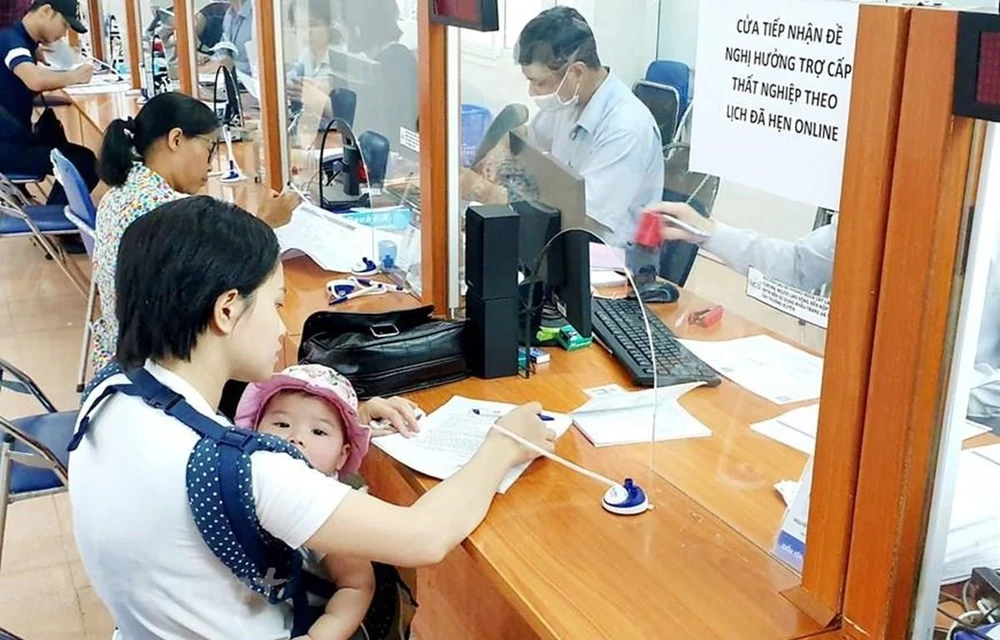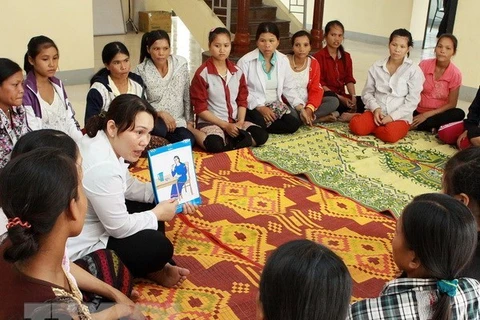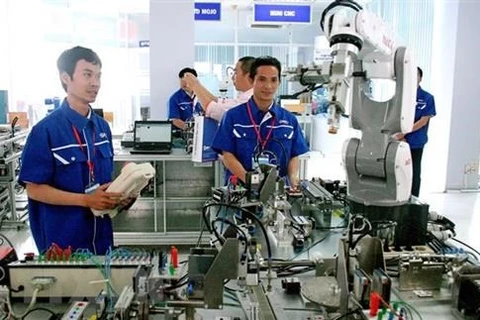
Hanoi (VNA) – About 9.1 million people in Vietnam had their employments negatively impacted by the COVID-19 pandemic in the first quarter of this year, with workers in the service sector being hardest hit, according to the General Statistics Office (GSO).
The GSO on August 16 published a report on the impacts of COVID-19 on the Vietnamese labour market in the first three months of 2021.
According to the report, almost 9.1 million Vietnamese people aged 15 and above had been negatively affected by the coronavirus crisis during the period, of who 51 percent are men and nearly two-thirds are those aged between 25 and 54.
This was likely due to the pandemic’s resurgence before the Tet (Lunar New Year) holiday in late January.
Of the total, 540,000 labourers lost their jobs and 2.8 million had their work suspended due to interrupted production.
As many as 3.1 million said they had working hours reduced or had to take time off work.
About 6.5 million of the 9.1 million workers saw their incomes reduced and labourers in urban areas suffered more than those in rural areas, with 15.6 percent of workers in cities affected compared to 10.4 percent in rural areas.
More than one in five workers in the service sector reported negative impacts from the pandemic in the first quarter, while those in the agro-forestry-fishery sector were least affected, with just 7.5 percent of workers reporting negative impacts, said Pham Hoai Nam, Director of the GSO’s Population and Labour Statistics Department.
Nam said it was common for the number of labourers to increase year on year as the population expands, but this year recorded an unusual trend in which the labour force in the first quarter downsized compared to the same periods in 2020 and 2019.
The third COVID-19 wave has caused the labour market recovery to lose its momentum achieved in the second half of last year and forced many people, particularly women, to shift to informal sectors.
Vietnam had 49.9 million labourers from the age of 15 in the first quarter of 2021, down by 959,600 compared to the previous quarter and 177,800 compared to the same period last year, or 1.8 percent and 0.36 percent, respectively, according to the report.
During the period, about 20.7 million people worked in the informal sector, down 251,700 quarter-on-quarter and up 525,400 year-on-year, accounting for 57.1 percent of the total. The informal sector's workers saw a sharp rise among women and in rural areas.
On the bright side, the report said the pandemic had changed working habits and encouraged more people to use information technology (IT).
More than 78,000 people said they had started applying IT in their work in the first quarter.
The statistics on the employment situation in the first quarter of 2021 reflected difficulties and fluctuations of the economy and the labour market of Vietnam in recent years.
“These difficulties represent a huge challenge to the Government's efforts to achieve the dual goal of developing the economy and recovering from the pandemic," Nam said.
In the context of unpredictable trends in the labour market, the GSO proposed issuing vaccine passports and preparing to resume tourism to offer more jobs and take advantage of the potential of Vietnamese labourers.
Nam said Vietnam still had 3.5 million workers in the agriculture sector who make products for themselves and their families. About 93.5 percent of these self-employed workers do not have any professional or technical qualifications.
Those people need to be given more incentives to attract them to the official labour market to improve their livelihoods and labour productivity for the society, Nam said./.

























